目标跟踪之Horn-Schunck光流法
关于光流法请看我之前的博客Lukas-Kanade光流法。这里介绍Horn-Schunck光流法。
Horn-Schunck光流法求得的是稠密光流,需要对每一个像素计算光流值,计算量比较大。而Lucas-Kanade光流法只需计算若干点的光流,是一种稀疏光流。
数学原理这里就不介绍了,直接说算法步骤。
用uij与vij分别表示图像像素点(i,j)处的水平方向光流值与垂直方向光流值,每次迭代后的更新方程为

n为迭代次数,lamda反映了对图像数据及平滑约束的可信度,当图像数据本身含有较大噪声时,此时需要加大lamda的值,相反,当输入图像含有较少的噪声时,此时可减小lamda的值。
代表u邻域与v邻域的平均值,一般采用相应4邻域内的均值
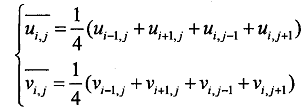
也可以采用3*3、5*5的窗口用模板平滑,窗口不宜过大,过大会破坏光流假设。
Ix、Iy分别是图像对x、y的偏导数。It是两帧图像间对时间的导数。
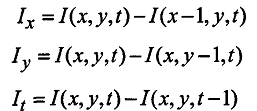
当然你也可以考虑相邻像素及相邻两帧图像的影响,Horn-Schunck 提出通过 4 次有限差分来得到

这里只考虑了前后两帧图像。考虑连续三帧图像的话有如下方法:
一种性能更优的 3D-Sobel 算子 如下图所示。该算子在x 、y 、t方向上分别使用不同的模板对连续3帧图像进行卷积计算 得出中间帧的位于模板中心的像素在三个方向上的梯度 。
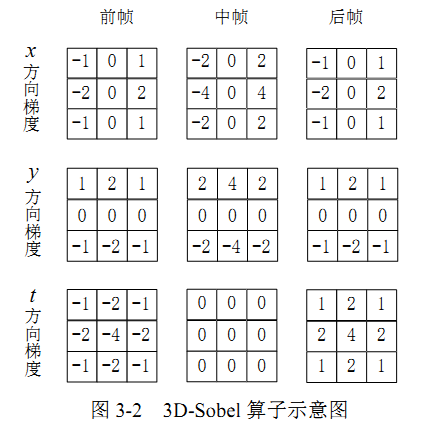
迭代一定次数后u、v收敛,光流计算停止。在实际的计算中迭代初值可取U(0) =0、V(0)=0。
算法改进
对于一般场景基本等式只有在图像中灰度梯度值较大的点处才成立。因此为了增强算法的稳定性和准确性 我们仅在梯度较大的点处才使用亮度恒常性约束,而在梯度较小的点处只使用流场一致性约束。定义如下权函数
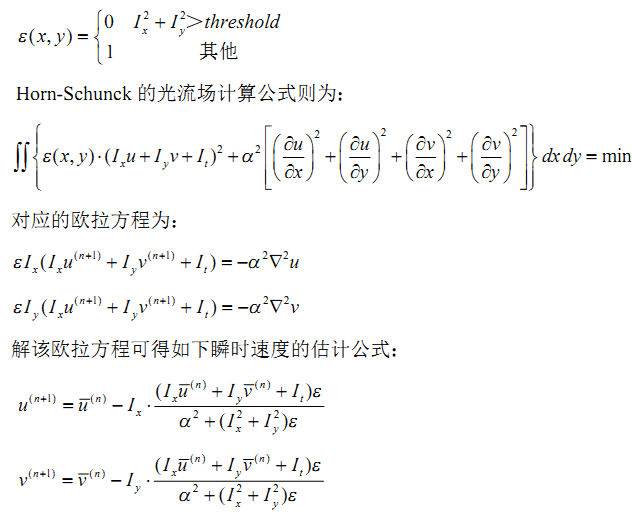
下面是我的实现,使用了图像金字塔,关于图像金字塔,请看Lukas-Kanade光流法。(写代码时传错一个参数,调了几个小时 )
)
#ifndef __HORNSCHUNCK__#define __HORNSCHUNCK__class HornSchunckTracker{private:unsigned int max_pyramid_layer;unsigned int original_imgH;unsigned int original_imgW;BYTE**pre_pyr;//the pyramid of previous frame image,img1_pyr[0] is of max sizeBYTE**next_pyr;//the frame after img1_pyrint*height;int*width;double*optical_field_U;double*optical_field_V;bool isusepyramid;double lamda;//取20const double precision = 1;const int maxiteration=300;double threshold;//最小的光流阈值double scale_factor;//缩放因子private:void get_max_pyramid_layer();void pyramid_down(BYTE*&src_gray_data, const int src_h,const int src_w, BYTE*& dst, int&dst_h, int&dst_w);void pyramid_up(double*src,int srcW,int srcH,double*dst,int dstW,int dstH);void lowpass_filter(double*&src, const int H, const int W, double*&smoothed);void get_fx_fy_ft(BYTE*img1, BYTE*img2, int w, int h, double*fx, double*fy, double*ft);void build_pyramid(BYTE**&original_gray);double get_average4(double*src, const int height, const int width, const int i, const int j);void bilinear(double* lpSrc, double* lpDst, int nW, int nH, int H1, int W1);void bilinear(BYTE* lpSrc, BYTE* lpDst, int nW, int nH, int H1, int W1);public:HornSchunckTracker();~HornSchunckTracker();void get_pre_frame(BYTE*&gray);//use only at the beginningvoid discard_pre_frame();//set the next frame as pre_frame,must dicard pre_pyr in advancevoid get_pre_frame();//use every time,must after using get_pre_frame(BYTE**pyr)void get_next_frame(BYTE*&gray);void get_info(const int nh, const int nw);void set_paras(double lamda,double threshold,double scalefactor);void run_single_frame();void HornSchunck();void get_optical_flow(double*&u, double*&v);};#endif#include "stdafx.h"#include "HornSchunckTracker.h"HornSchunckTracker::HornSchunckTracker(){isusepyramid = true;}HornSchunckTracker::~HornSchunckTracker(){for (int i = 0; i < max_pyramid_layer; i++){if (pre_pyr[i])delete[]pre_pyr[i];if (next_pyr[i])delete[]next_pyr[i];}delete[]pre_pyr;delete[]next_pyr;if (height)delete[]height;if (width)delete[]width;}void HornSchunckTracker::get_max_pyramid_layer(){double minsize = 80;double temp = original_imgH > original_imgW ?original_imgW : original_imgH;double tt = log(temp / minsize) / log(scale_factor);if (tt>4){max_pyramid_layer = 5;return;}max_pyramid_layer = tt;}void HornSchunckTracker::build_pyramid(BYTE**&pyramid){for (int i = 1; i < max_pyramid_layer; i++){pyramid_down(pyramid[i - 1], height[i - 1],width[i - 1], pyramid[i], height[i], width[i]);}}void HornSchunckTracker::pyramid_down(BYTE*&src_gray_data,const int src_h, const int src_w, BYTE*& dst, int&dst_h, int&dst_w){dst_h = src_h / scale_factor;dst_w = src_w / scale_factor;assert(dst_w > 3 && dst_h > 3);//BYTE*smoothed = new BYTE[src_h*src_w];dst = new BYTE[dst_h*dst_w];//lowpass_filter(src_gray_data, src_h, src_w,smoothed);bilinear(src_gray_data, dst, src_w, src_h, dst_h, dst_w);/*for (int i = 0; i < dst_h - 1; i++)for (int j = 0; j < dst_w - 1; j++){int srcY = 2 * i + 1;int srcX = 2 * j + 1;double re = src_gray_data[srcY*src_w + srcX] * 0.25;re += src_gray_data[(srcY - 1)*src_w + srcX] * 0.125;re += src_gray_data[(srcY + 1)*src_w + srcX] * 0.125;re += src_gray_data[srcY*src_w + srcX - 1] * 0.125;re += src_gray_data[srcY*src_w + srcX + 1] * 0.125;re += src_gray_data[(srcY - 1)*src_w + srcX + 1] * 0.0625;re += src_gray_data[(srcY - 1)*src_w + srcX - 1] * 0.0625;re += src_gray_data[(srcY + 1)*src_w + srcX - 1] * 0.0625;re += src_gray_data[(srcY + 1)*src_w + srcX + 1] * 0.0625;dst[i*dst_w + j] = re;}for (int i = 0; i < dst_h; i++)dst[i*dst_w + dst_w - 1] = dst[i*dst_w + dst_w - 2];for (int i = 0; i < dst_w; i++)dst[(dst_h - 1)*dst_w + i] = dst[(dst_h - 2)*dst_w + i];*/}void HornSchunckTracker::get_pre_frame(BYTE*&gray)//use only at the beginning{pre_pyr[0] = gray;build_pyramid(pre_pyr);//save_gray("1.bmp", pre_pyr[1], height[1], width[1]);}void HornSchunckTracker::discard_pre_frame(){for (int i = 0; i < max_pyramid_layer; i++)delete[]pre_pyr[i];}//set the next frame as pre_frame,must dicard pre_pyr in advancevoid HornSchunckTracker::get_pre_frame(){for (int i = 0; i < max_pyramid_layer; i++)pre_pyr[i] = next_pyr[i];}//use every time,must after using get_pre_frame(BYTE**pyr)void HornSchunckTracker::get_next_frame(BYTE*&gray){next_pyr[0] = gray;build_pyramid(next_pyr);//save_gray("1.bmp", next_pyr[1], height[1], width[1]);}void HornSchunckTracker::get_info(const int nh, const int nw){original_imgH = nh;original_imgW = nw;if (isusepyramid)get_max_pyramid_layer();elsemax_pyramid_layer = 1;pre_pyr = new BYTE*[max_pyramid_layer];next_pyr = new BYTE*[max_pyramid_layer];height = new int[max_pyramid_layer];width = new int[max_pyramid_layer];height[0] = nh;width[0] = nw;}//低通滤波void HornSchunckTracker::lowpass_filter(double*&src, const int H, const int W, double*&smoothed){//tackle with borderfor (int i = 0; i < H; i++){smoothed[i*W] = src[i*W];smoothed[i*W + W - 1] = src[i*W + W - 1];}for (int i = 0; i < W; i++){smoothed[i] = src[i];smoothed[(H - 1)*W + i] = src[(H - 1)*W + i];}for (int i = 1; i < H - 1; i++)for (int j = 1; j < W - 1; j++){double re = 0;re += src[i*W + j] * 0.25;re += src[(i - 1)*W + j] * 0.125;re += src[i*W + j + 1] * 0.125;re += src[i*W + j - 1] * 0.125;re += src[(i + 1)*W + j] * 0.125;re += src[(i - 1)*W + j - 1] * 0.0625;re += src[(i + 1)*W + j - 1] * 0.0625;re += src[(i - 1)*W + j + 1] * 0.0625;re += src[(i + 1)*W + j + 1] * 0.0625;smoothed[i*W + j] = re;}}void HornSchunckTracker::get_fx_fy_ft(BYTE*img1, BYTE*img2, int w, int h, double*fx, double*fy, double*ft){for (int i = 0; i < h - 1; i++)for (int j = 0; j < w - 1; j++){fx[i*w + j] = 0.25*(img1[i*w + j + 1] - img1[i*w + j] + img1[(i + 1)*w + j + 1] - img1[(i + 1)*w + j]+ img2[i*w + j + 1] - img2[i*w + j] + img2[(i + 1)*w + j + 1] - img2[(i + 1)*w + j]);fy[i*w + j] = 0.25 * (img1[(i + 1)*w + j] - img1[i*w + j] +img1[(i + 1)*w + j + 1] - img1[i*w + j + 1]+ img2[(i + 1)*w + j] - img2[i*w + j] + img2[(i + 1)*w + j + 1] - img2[i*w + j + 1]);ft[i*w + j] = 0.25 * (img2[i*w + j] - img1[i*w + j] +img2[(i + 1)*w + j] - img1[(i + 1)*w + j] +img2[(i + 1)*w + j + 1] - img1[(i + 1)*w + j + 1] + img2[i*w + j + 1] - img1[i*w + j + 1]);}for (int i = 0; i < h; i++){//fx[i*w] = fx[i*w + w - 2];fx[i*w + w - 1] = fx[i*w + w - 2];//fy[i*w] = fy[i*w + w - 2];fy[i*w + w - 1] = fy[i*w + w - 2];//ft[i*w] = ft[i*w + w - 2];ft[i*w + w - 1] = ft[i*w + w - 2];}for (int j = 0; j < w; j++){//fx[j] = fx[h + j];fx[(h - 1)*w + j] = fx[(h - 2)*w + j];//fy[j] = fy[h + j];fy[(h - 1)*w + j] = fy[(h - 2)*w + j];//ft[j] = ft[h + j];ft[(h - 1)*w + j] = ft[(h - 2)*w + j];}}//取得计算得到的光流值,u、v为out型参数void HornSchunckTracker::get_optical_flow(double*&u, double*&v){assert(optical_field_U&&optical_field_V);u = optical_field_U;v = optical_field_V;}//int save_gray(char * savebmp_file, LPBYTE gray, int height, int width);//返回求得的光流场,大小为原始图像大小void HornSchunckTracker::HornSchunck(){//save_gray("22.bmp", pre_pyr[0], height[0], width[0]);//初始化光流场为0if (optical_field_U)delete[]optical_field_U;if (optical_field_V)delete[]optical_field_V;optical_field_U = new double[width[max_pyramid_layer - 1]* height[max_pyramid_layer - 1]];optical_field_V = new double[width[max_pyramid_layer - 1]* height[max_pyramid_layer - 1]];memset(optical_field_U, 0, sizeof(double)*width[max_pyramid_layer - 1]* height[max_pyramid_layer - 1]);memset(optical_field_V, 0, sizeof(double)*width[max_pyramid_layer - 1]* height[max_pyramid_layer - 1]);//使用金字塔计算光流for (int i = max_pyramid_layer - 1; i >= 0; i--){double*Ix = new double[width[i] * height[i]];double*Iy = new double[width[i] * height[i]];double*It = new double[width[i] * height[i]];//求偏导get_fx_fy_ft(pre_pyr[i], next_pyr[i], width[i], height[i], Ix, Iy, It);//将光流场平滑double*smoothed_U = new double[width[i] * height[i]];double*smoothed_V = new double[width[i] * height[i]];if (i == max_pyramid_layer - 1){memset(smoothed_U, 0, sizeof(double)*width[i] * height[i]);memset(smoothed_V, 0, sizeof(double)*width[i] * height[i]);}else{lowpass_filter(optical_field_U, height[i], width[i], smoothed_U);lowpass_filter(optical_field_V, height[i], width[i], smoothed_V);}double error = 1000000;int iteration = 0;//迭代计算每个像素的光流,直到收敛或达到最大迭代次数while (error > precision&&iteration < maxiteration){iteration++;error = 0;//计算该层金字塔的光流for (int j = 0; j < height[i]; j++)for (int k = 0; k < width[i]; k++){//采用改进方法,光流速度需大于阈值,这样不仅准确度增加,计算量也会减小double w = Ix[j*width[i] + k] * Ix[j*width[i] + k]+ Iy[j*width[i] + k] * Iy[j*width[i] + k] > threshold ? 1 : 0;double u_pre = optical_field_U[j*width[i] + k];double v_pre = optical_field_V[j*width[i] + k];double utemp = smoothed_U[j*width[i] + k];//get_average4(optical_field_U, height[i], width[i], j, k);double vtemp = smoothed_V[j*width[i] + k]; //get_average4(optical_field_V, height[i], width[i], j, k);double denominator = lamda + w*(Ix[j*width[i] + k] * Ix[j*width[i] + k]+ Iy[j*width[i] + k] * Iy[j*width[i] + k]);double numerator = Ix[j*width[i] + k] * utemp + Iy[j*width[i] + k] *vtemp + It[j*width[i] + k];optical_field_U[j*width[i] + k] = utemp - Ix[j*width[i] + k] *w*numerator / denominator;optical_field_V[j*width[i] + k] = vtemp - Iy[j*width[i] + k] *w*numerator / denominator;error += pow(optical_field_U[j*width[i] + k] - u_pre,2) +pow(optical_field_V[j*width[i] + k] - v_pre,2);}//下一次迭代前重新平滑光流场if (error >exp(double(max_pyramid_layer-i))*precision&&iteration < maxiteration){lowpass_filter(optical_field_U, height[i], width[i], smoothed_U);lowpass_filter(optical_field_V, height[i], width[i], smoothed_V);}}delete[]smoothed_U, smoothed_V,Ix,Iy,It;if (i == 0)//得到最终光流场{return;}//下一层的光流场double*new_of_u = new double[width[i - 1] * height[i - 1]];double*new_of_v = new double[width[i - 1] * height[i - 1]];//上采样pyramid_up(optical_field_U, width[i], height[i], new_of_u, width[i - 1], height[i - 1]);pyramid_up(optical_field_V, width[i], height[i], new_of_v, width[i - 1], height[i - 1]);//将每个像素的光流按缩放因子放大,得到下一层的光流场的初值//double scale = double(height[i - 1]) / height[i];for (int j = 0; j < height[i - 1]; j++)for (int k = 0; k < width[i - 1]; k++){new_of_u[j*width[i - 1] + k] *= scale_factor;new_of_v[j*width[i - 1] + k] *= scale_factor;}delete[]optical_field_U, optical_field_V;optical_field_U = new_of_u;optical_field_V = new_of_v;}}//上采样,采用双线性插值,用双立方插值应该更精确void HornSchunckTracker::pyramid_up(double*src, int srcW, int srcH, double*dst, int dstW, int dstH){bilinear(src, dst, srcW, srcH, dstH, dstW);}//双线性插值void HornSchunckTracker::bilinear(double* lpSrc, double* lpDst, int nW, int nH, int H1, int W1){float fw = float(nW) / W1;float fh = float(nH) / H1;int y1, y2, x1, x2, x0, y0;float fx1, fx2, fy1, fy2;for (int i = 0; i < H1; i++){y0 = i*fh;y1 = int(y0);if (y1 == nH - 1) y2 = y1;else y2 = y1 + 1;fy1 = y1 - y0;fy2 = 1.0f - fy1;for (int j = 0; j < W1; j++){x0 = j*fw;x1 = int(x0);if (x1 == nW - 1) x2 = x1;else x2 = x1 + 1;fx1 = y1 - y0;fx2 = 1.0f - fx1;float s1 = fx1*fy1;float s2 = fx2*fy1;float s3 = fx2*fy2;float s4 = fx1*fy2;double c1, c2, c3, c4;c1 = lpSrc[y1*nW + x1];c2 = lpSrc[y1*nW + x2];c3 = lpSrc[y2*nW + x1];c4 = lpSrc[y2*nW + x2];double r;r = (c1*s3) + (c2*s4) + (c3*s2) + (c4*s1);lpDst[i*W1 + j] = r;}}}//双线性插值void HornSchunckTracker::bilinear(BYTE* lpSrc, BYTE* lpDst, int nW, int nH, int H1, int W1){float fw = float(nW) / W1;float fh = float(nH) / H1;int y1, y2, x1, x2, x0, y0;float fx1, fx2, fy1, fy2;for (int i = 0; i < H1; i++){y0 = i*fh;y1 = int(y0);if (y1 == nH - 1) y2 = y1;else y2 = y1 + 1;fy1 = y1 - y0;fy2 = 1.0f - fy1;for (int j = 0; j < W1; j++){x0 = j*fw;x1 = int(x0);if (x1 == nW - 1) x2 = x1;else x2 = x1 + 1;fx1 = y1 - y0;fx2 = 1.0f - fx1;float s1 = fx1*fy1;float s2 = fx2*fy1;float s3 = fx2*fy2;float s4 = fx1*fy2;double c1, c2, c3, c4;c1 = lpSrc[y1*nW + x1];c2 = lpSrc[y1*nW + x2];c3 = lpSrc[y2*nW + x1];c4 = lpSrc[y2*nW + x2];double r;r = (c1*s3) + (c2*s4) + (c3*s2) + (c4*s1);lpDst[i*W1 + j] = BYTE(r);}}}void HornSchunckTracker::set_paras(double lamda, double threshold, double scalefactor){this->lamda = lamda;this->threshold = threshold;scale_factor = scalefactor;}//double HornSchunckTracker::get_average4(double*src, const int height, const int width, const int i, const int j)//{// if (j < 0 || j >= width) return 0;// if (i < 0 || i >= height) return 0;//// double val = 0.0;// int tmp = 0;// if ((i - 1) >= 0){// ++tmp;// val += src[(i - 1)*width + j];// }// if (i + 1<height){// ++tmp;// val += src[(i + 1)*width + j];// }// if (j - 1 >= 0){// ++tmp;// val += src[i*width + j - 1];// }// if (j + 1<width){// ++tmp;// val += src[i*width + j + 1];// }// return val / tmp;////}
下面是两帧图像和检测结果



可以看出对边缘的光流检测较好,内部点的光流检测较难。




























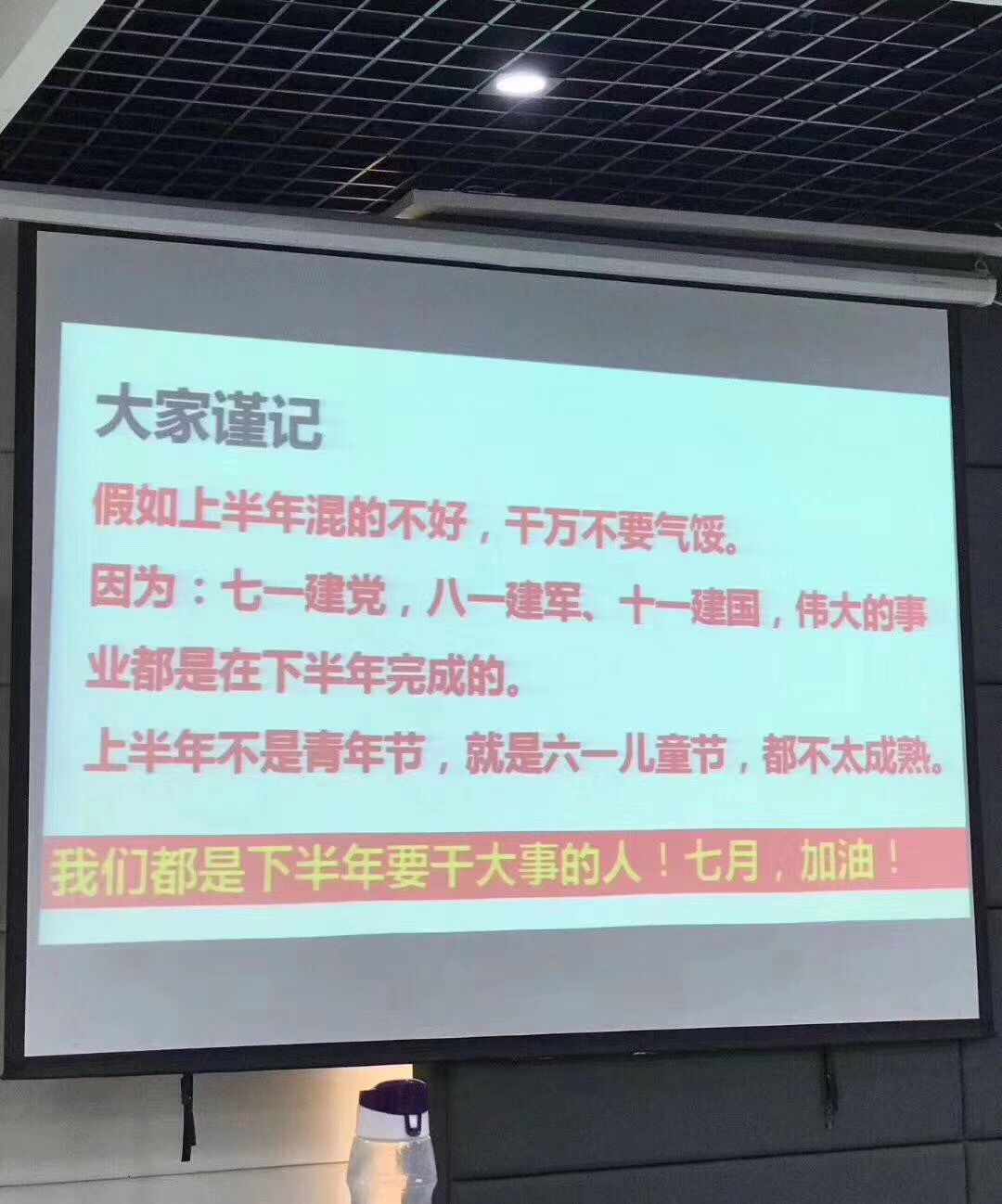
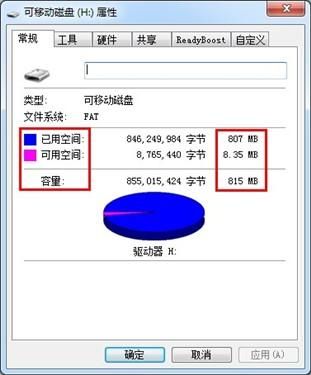





还没有评论,来说两句吧...